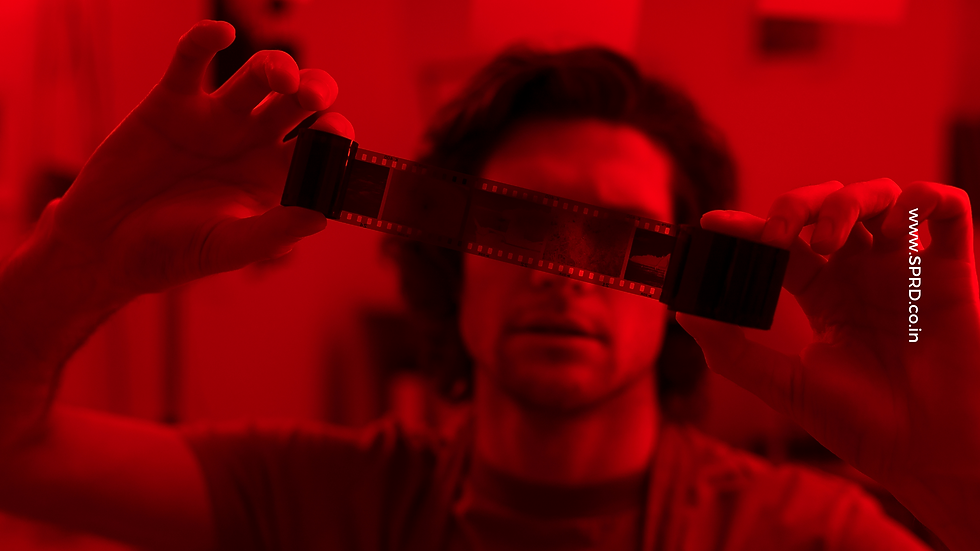Dump A Client? Maybe It's Time! Here's Knowing When
- SPRD

- Nov 27, 2019
- 4 min read
Updated: Nov 24, 2023
The media community is notorious for giving its professionals their share of ups and downs. Sometimes it’s on an individual level, sometimes it’s the entire team feeling the pressure of a deadline or expectations, but sometimes it’s just the client making cordial and efficacious work absolutely impossible.
Often, it’s hard to tell the difference between a little harmless friction with the client and a serious case of mistreatment or unethical behaviour on the client’s part. In some cases, a written clause may be disrespected and in other cases you may need to take a discretionary call based on the extent of the misbehavior.
There are, however, certain cases where no ambiguity remains. Here are 3 circumstances under which you should acknowledge the thin line between acceptable and inexcusable, and undoubtedly step back from a client.
The difference between rudeness and assertiveness
Everyone wants their ideas and inputs to be heard, considered and executed. We’ve all got multiple projects on our plate, tight deadlines and a host of unreasonable expectations from various quarters. However, there is certain etiquette and politeness that you are entitled to expect from a client. There are of course occasional instances of slight abruptness, but when impolite behaviour, unnecessary reprimanding and insulting language become a habit, it’s time to let go.
Assertiveness can be achieved in a calm, peaceful manner as well. If your client fails to understand the thin line between rude and assertive, make sure you yourself are assertive enough to know exactly how much you are okay with. All client-consultancy relationships work both ways, and an extension of basic courtesy must be extended from both sides.
The difference between inspiring and being taken for granted
You’ve done the requisite market research and more, crafted a beautiful PR strategy that can be sustained over a period of time, and incorporated various non-traditional routes. You have even made sure to include various affordable options for the more expensive platforms proposed. To top it all off, you have included a salient impact assessment plan so that the success of the strategy can be measured at every juncture. Everything is ready to be set in motion and the client loves your ideas.
The next thing you know, the client has chosen to work with another PR consultancy, soon after which you start seeing campaigns rolling out, possessing a startling similarity to your own ideas. Taking inspiration from your ideas and copying them altogether are two very different situations. If you feel that your concepts have been lifted word for word, complete with some defining innovative proposals you made, this is when you should feel concerned. There is often nothing you can do in such cases to claim ownership for something so intangible. However, this is a sign that you should avoid working with this client in the future. They may offer you better money, they may even come back to you when they are a huge name in the business. Such temptation can compel you to go with them at the outset, but if you hold ethics in high regard, then remember that you deserve a clientele who does the same.
The difference between cost-effective and plain stingy
A lot of multinational conglomerates underestimate the importance of public relations. During budgeting, they are likely to set aside an abysmal amount for PR operations, even though they have the resources to invest. While it is important to educate the leaders of such companies on the benefits of PR, and on the fact that measurable impact is achievable, there is a limit to how much explaining you can do. Pitching ideas and proposing effective cost breakdowns is your job, yes. You can provide alternatives and solutions. You can even provide methods to measure ROI, thus proving the worthiness of a certain investment. Altogether, you can even make it clear how much of an effort you’re having to make, right from strategy to execution.
Perhaps, initiate a portion of the work for a lesser amount than deserved. If the client understands the limitations resulting from their monetary restrictions, then it can be the beginning of a productive relationship. However, if a pattern ensues, where the client refuses to pay you what you deserve, refuses to invest substantially in PR, and yet expects unreasonable outcomes, then this is where you draw the line.
Ultimately the point is not to just spend extravagantly or meagerly on PR operations. The point is to spend wisely, and expect outcomes that line up with this expenditure.
When looking at journalists and PR professionals as two sides of a coin, the PR counterparts are often referred to as “The Dark Side.” And with the rise of a whole section of PR called Dark PR (DPR), consisting of unethical practices, smear campaigns, and appropriation of others’ ideas, consultancies are even going to the extent of specializing in DPR services – all in all not helping with how public relations as a field is perceived.
However, anyone in the PR sector knows the importance of integrity and the positive impact that results from a reciprocal, healthy relationship between consultancy and client.
This article first featured on Reputation Today.




Comments